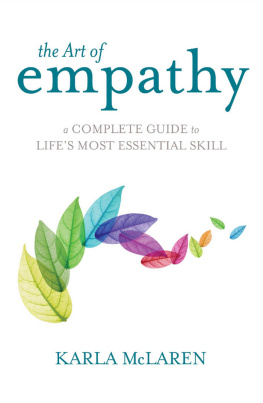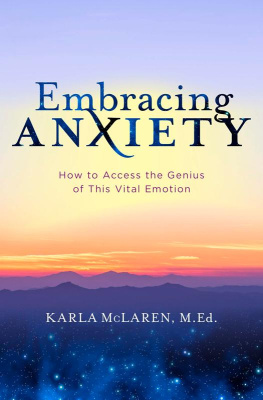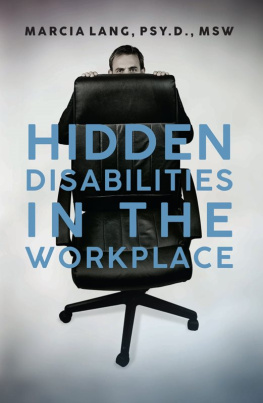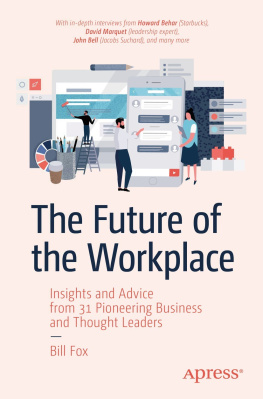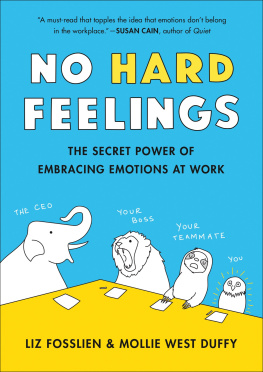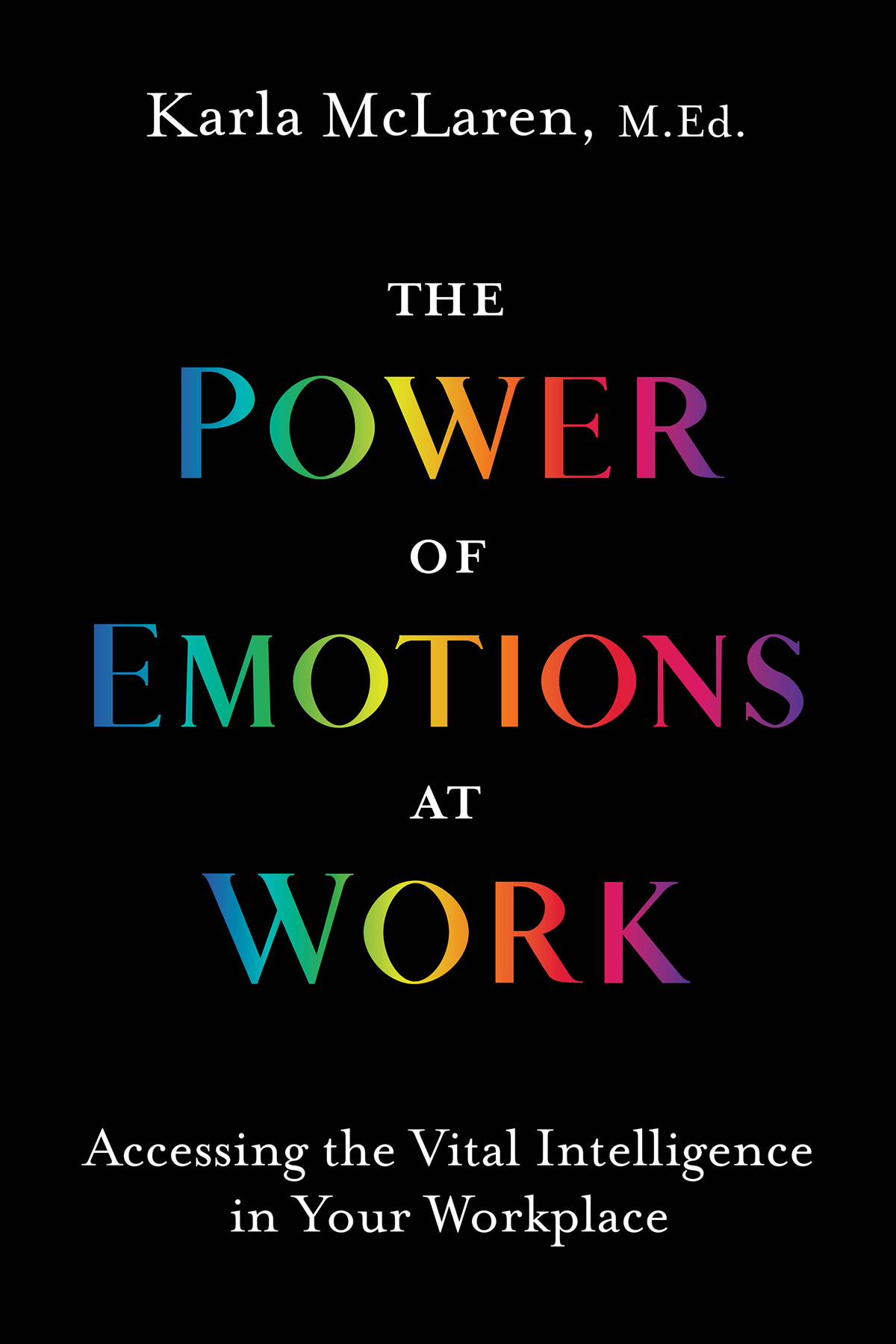Contents
Guide
Page List
CONTENTS
GLOSSARY OF TERMS
T his book explores the vital emotional labor and empathic labor that occurs in the workplace every day, yet is usually undervalued, ignored, or even suppressed. To make this labor visible, beneficial, and workable for everyone, I rely upon research concepts and terms I developed to daylight these essential yet unmapped areas of workplace intelligence and behavior.
BANANA TIME: Informal break-time rituals that are developed and led by workers themselves.
DEVILS FLOORPLAN: The disastrous open-plan office.
DYNAMIC EMOTIONAL INTEGRATION: My educational and consulting process that helps people develop emotional skills and awareness, healthy empathy, and emotionally respectful mindfulness practices.
EMOTIONAL DYNAMICS AT WORK: My workplace consulting process, which focuses on emotions, empathy, communication, and the social and emotional well-being of workplace communities.
EMOTIONAL LABOR: Sociologist Arlie Hochschilds concept of the paid work you do to display or suppress specific emotions and emotional responses in the context of your job.
EMOTIONALLY WELL-REGULATED SOCIAL STRUCTURES: My nine-part model explores vital features and agreements that create healthy, supportive, and workable social environments for people, their emotions, and their relationships.
EMOTION PROFESSIONALS: People whose work depends primarily on the gifts and skills in one or more emotions, such as grief for hospice workers, or focused anxiety for air traffic controllers.
EMOTION WORK: Sociologist Arlie Hochschilds concept of the work you do outside of your paid position to manage your own emotions or the emotions of others to sustain your relationships and the smooth flow of everyday life.
EMPATHIC DESIGN: A design process that focuses on end users needs and emotions, and employs multiple tryouts and redesigns until the end product meets those needs.
EMPATHY: A social and emotional skill that helps you feel and understand the emotions, circumstances, intentions, thoughts, and needs of others, such that you can offer sensitive, perceptive, and appropriate communication and support.
EMPATHY WORK: My conceptualization of an extensive and multilayered form of emotion work that involves an understanding of emotions, empathy, relationships, social structures, and large-group social skills.
FIKA: The Swedish tradition of friendly and relaxing coffee (or tea) breaks that involve sweets and socialization (or sweets and private time).
GOSSIP NETWORKS: In contrast to formal information networks that exist to support the formal power structure, these are essential informal networks that contain extensive social, emotional, and empathic information about the complex inner workings of a workplace or a group. We work to make these networks ethical, supportive, and empathic.
KEYSTONES: Workers who perform (usually unpaid) emotion work or empathy work to fill in the social and emotional gaps in an emotionally unregulated workplace. I focus on four types of Keystones, but of course, these are not the only ones:
Agitators: Workers who act out unwelcome emotions in an emotionally repressive or empathically unskilled workplace community.
Ambassadors: Workers who take on the (usually unpaid) task of welcoming and training new people in a workplace where there are no effective onboarding processes.
Connectors: Workers who develop and maintain relationships throughout the entire workplace structure. Connectors are especially valuable in large bureaucracies, workplaces that have expanded quickly, or workplaces that are fragmented by artificial or hierarchical divisions between people.
Peacemakers: Workers who do emotion work and empathy work to smooth out troubled relationships between disconnected or conflicting departments and/or individuals.
LARGE-GROUP SOCIAL SKILLS: Our ability to understand, navigate, relate, and work successfully within large and interconnected groups such as extended families, schools, committees, workplaces, and organizations.
OSHA: The Occupational Safety and Health Administration in the US, which was founded in 1971 to protect workers (and whistleblowers) from unsafe or hazardous working conditions. However, OSHA does not protect self-employed or contract workers, which is a big concern for gig workers (for example, more than 4 million contractors in the US drive and work without workplace safety protections for immensely wealthy companies such as Uber, Lyft, Instacart, and DoorDash).
REPAIR STATIONS: Sociologist Erving Goffmans concept of protected backstage areas where people can be real and honest about what theyre facing, or where they can rest and get away from the frontstage demands of their lives or their jobs. Repair stations in the workplace can be physical spaces such as break rooms or smoking balconies, or they can be social spaces such as intentional communication practices or trusting relationships.
SELF-DETERMINATION THEORY: This theory by Edward Deci and Richard Ryan focuses on motivation, human development, and well-being, and identifies three requirements for healthy and lasting internal motivation:
Competence: The ability to interact skillfully and effectively in your environment.
Autonomy: The ability to make choices, regulate yourself, and make decisions about your own life.
Relatedness: The presence of healthy relationships and a sense of closeness, belonging, and love.
THEORY X: Management professor Douglas McGregors two-part model of worker motivation. Theory X views people as unwilling workers who have to be coerced or ordered to work via rewards and punishments; their motivation has to come from the outside or they wont perform. Contrasted with Theory Y, below.
THEORY Y: In McGregors model of worker motivation, Theory Y views people as willing workers whose motivation is natural and internal, and who require trust and a healthy social atmosphere in order to do their best work. McGregor proposed that Theory Y was a more humane, logical, and profitable way to treat workers and to run businesses than Theory X.
TOXIC POSITIVITY BIAS: A dangerously mistaken belief that the allegedly positive emotions are the only emotions that should be felt or shared in the workplace. This bias causes extensive suffering as people suppress all forbidden emotions, lose their emotional awareness and skills, and become unable to address serious problems that require the gifts, skills, and genius in the forbidden emotions.
UNINTENTIONAL COMMUNITY: A group of people who are thrown together haphazardly without dependable communication processes, emotional skills, empathy skills, or clear models for relationships or conflict. Sadly, most workplaces are unintentional communities.
WORKERS OF THE WORLD (WoW): Members of my Dynamic Emotional Integration licensee community who gathered together to offer support and ideas during the writing of this book.
PREFACE
I was so excited to write this book about the vital intelligence of emotions: how they help us do our best work, how they help us understand ourselves and others, and how (if we learn how to harness their power and genius) they can contribute to the health and success of every workplace. Certainly, I was aware of the many serious troubles in the workplace, but I was so happy to have the freedom to share my vision of a healthy new workplace and explore the ideas Ive gathered in the many decades Ive spent studying and consulting in the workplace. I was in a type of utopian mindset as I began to write this book, but then the Covid-19 pandemic began and the extensive troubles in the workplace became all too clear to everyone.


